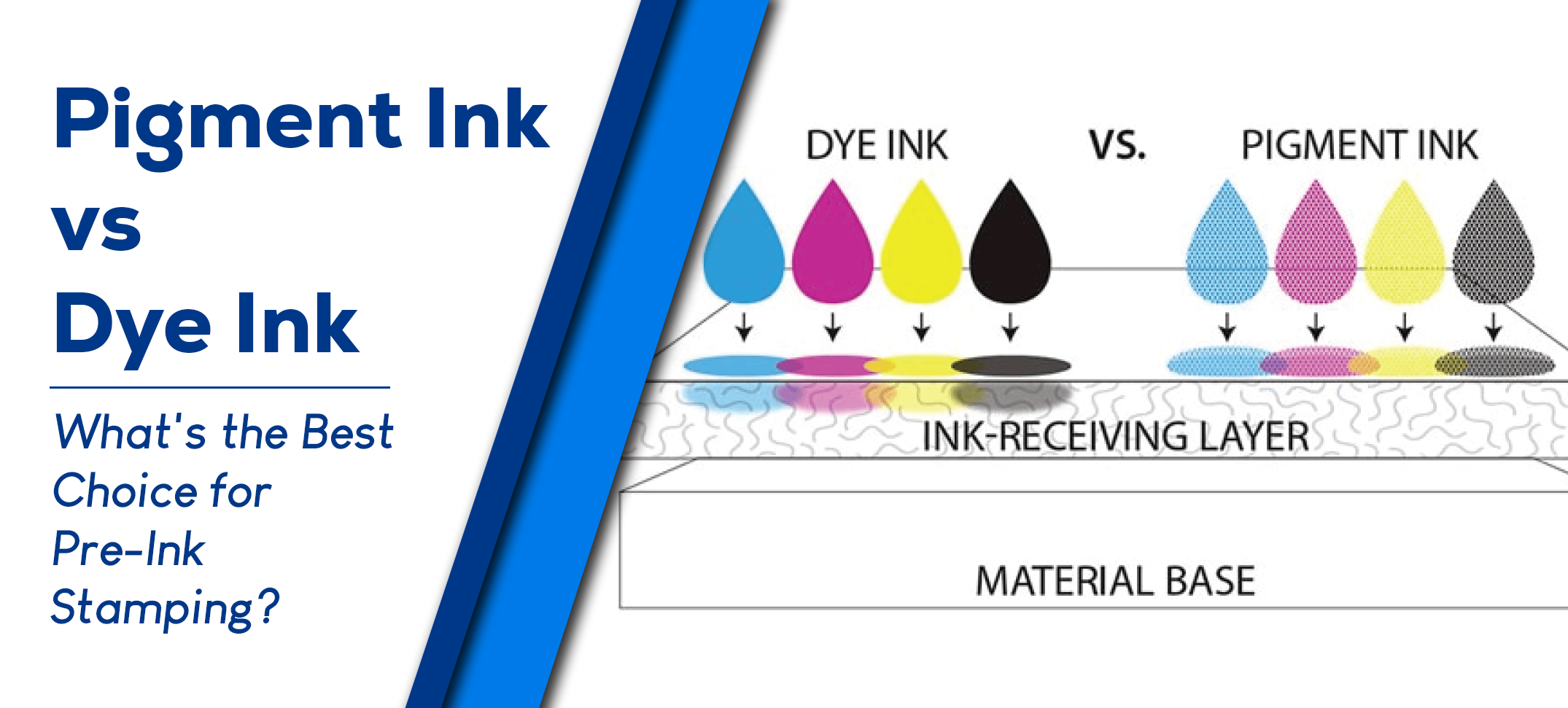Choosing the right ink is crucial for achieving optimal results. Among the myriad of options available, two main contenders stand out: pigment ink and dye ink. Both have their unique characteristics and advantages, but when it comes to pre-ink stamping, determining the best choice can be pivotal. In this article, we’ll delve into the differences between pigment and dye inks and explore which one is the ideal fit for pre-ink stamping applications.
Understanding Pigment Ink: Pigment ink is composed of tiny solid particles suspended in a liquid base. These particles, typically made from finely ground pigments, sit on the surface of the material being stamped. Pigment inks are known for their rich, opaque colors and excellent lightfastness. They produce crisp, sharp impressions and are suitable for a wide range of surfaces, including paper, fabric, and non-porous materials.
Advantages of Pigment Ink for Pre-Ink Stamping:
- Durability: Pigment ink is highly durable and resistant to fading, making it ideal for archival purposes and long-lasting impressions.
- Versatility: It adheres well to various surfaces, making it suitable for pre-ink stamping on different materials such as paper, cardboard, wood, and even metal.
- Water Resistance: Pigment ink tends to be more water-resistant than dye ink, making it suitable for applications where exposure to moisture is a concern.
- Color Stability: Pigment ink maintains its color intensity over time and is less prone to color shifting or fading, ensuring consistent results with each stamping.
Understanding Dye Ink: Unlike pigment ink, dye ink consists of colorants dissolved in a liquid base. The dye molecules penetrate the surface of the material being stamped, resulting in vibrant, translucent colors. Dye inks are known for their quick-drying properties and ability to blend seamlessly on porous surfaces such as paper.
Advantages of Dye Ink for Pre-Ink Stamping:
- Vibrant Colors: Dye ink produces bright, vivid colors that are well-suited for artistic and decorative stamping applications.
- Quick Drying: Dye ink dries quickly, reducing the risk of smudging or smearing during the stamping process.
- Cost-Effectiveness: Dye ink is often more affordable than pigment ink, making it a budget-friendly option for large-scale stamping projects.
- Ink Absorption: Dye ink is absorbed by porous surfaces, resulting in smooth and even coverage without leaving a raised texture.
Choosing the Best Ink for Pre-Ink Stamping: When deciding between pigment ink and dye ink for pre-ink stamping, several factors should be considered:
- Surface Material: Consider the type of surface you’ll be stamping on. If you’re working with porous materials like paper or cardboard, dye ink may be the preferred choice for its fast-drying and absorbent properties. For non-porous materials such as glossy paper or plastic, pigment ink may provide better adhesion and durability.
- Desired Effect: Determine the desired outcome of your stamped image. If you’re aiming for vibrant, translucent colors with seamless blending, dye ink may be the way to go. On the other hand, if you require opaque, fade-resistant colors with sharp detail, pigment ink might be more suitable.
- Longevity: Consider the longevity of your stamped impressions. If your stamped materials need to withstand prolonged exposure to light, moisture, or handling, pigment ink’s superior durability and lightfastness make it a reliable choice for archival purposes.
- Budget: Evaluate your budget and project requirements. While pigment ink tends to be more expensive than dye ink, its longevity and color stability may justify the investment for certain applications. However, if cost-effectiveness is a priority, dye ink offers a more economical option without compromising on quality.
In the debate between pigment ink and dye ink for pre-ink stamping, there is no one-size-fits-all answer. Each type of ink offers distinct advantages depending on the specific requirements of your stamping project. By understanding the characteristics of pigment and dye inks and considering factors such as surface material, desired effect, longevity, and budget, you can make an informed decision to ensure optimal results in your pre-ink stamping endeavors. Whether you prioritize vibrant colors, durability, or cost-effectiveness, choosing the right ink is key to unlocking the full potential of your stamped creations.


